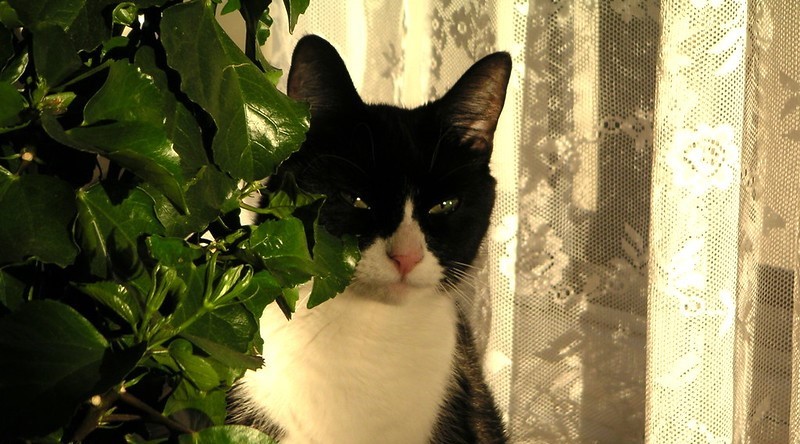
Have you ever been asked, “Are you a plant person or a pet person?”
I personally believe you can be both. While it’s totally natural to worry about accidentally poisoning your cat or dog, there are tons of plants out there that are beautiful AND totally non-toxic to our furkids.
Here are a few of our favourites!
House plants
These are the plants that can tolerate medium to low light conditions, which make them ideal to have inside your home. Of course, this doesn’t mean that you can’t also have them in your garden!
1. Bird’s nest fern (Asplenium Nidus)
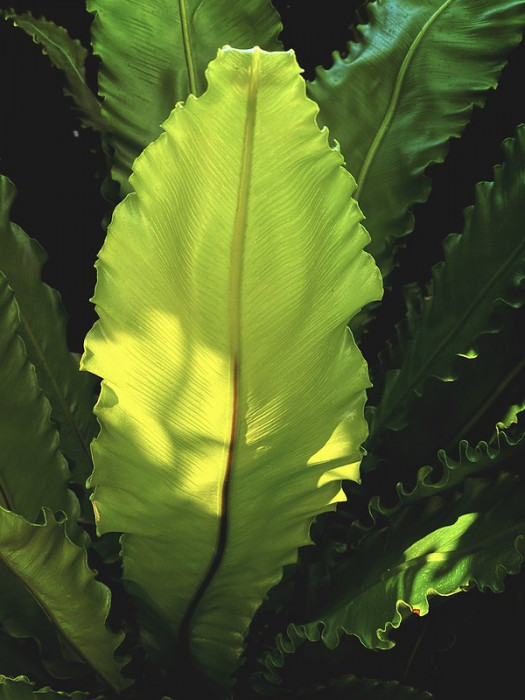
Why the bird’s nest fern is so great:
- Beautiful large green leaves (with no thorns!)
- Easily accommodated – this fern is actually an epiphyte so it can be placed on a tree outdoors or in a pot indoors
- It’s super hardy, and can survives in low to medium light
- Only needs watering once a week
2. Rattlesnake plant (Calathea Lancifolia)
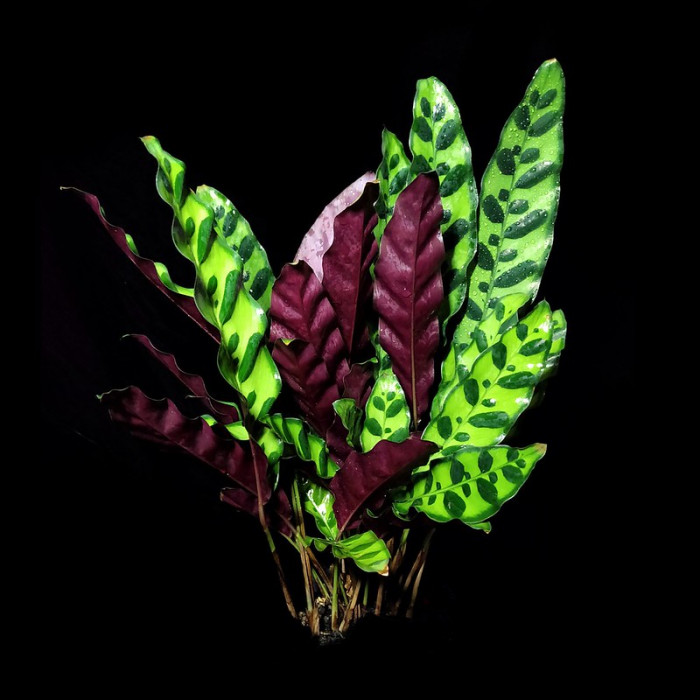
Why the rattlesnake plant is so great:
- Killer stripes – I love the stunning contrast between the dark and light green foliage
- It “Dances” throughout the day due to the flux of water pressure in the nodes running up the base of its leaves
- It can survives in indirect light
- Only needs watering once a week!
3. Spider plant (Chlorophytum Comosum)
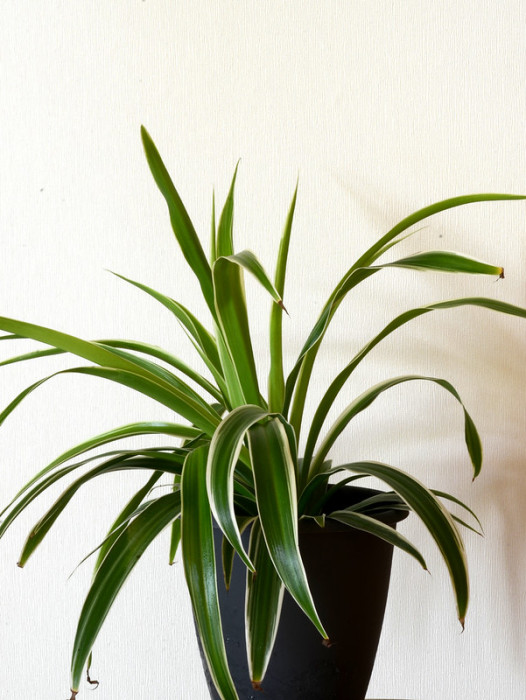
Why we love it:
- Cats seem to love playing with these pretty long leaves
- It survives in indirect sunlight
- So easy to propagate once pups show up!
- Generally low maintenance, and only needs water once a week
Succulents, the ones that thrive on neglect
These are the plants that can survive (and even thrive!) under low-water conditions. Don’t have a green thumb? Don’t worry – you won’t need it here.
4. Zebra plant (Haworthia Attenuata) (but also any type of Haworthia)
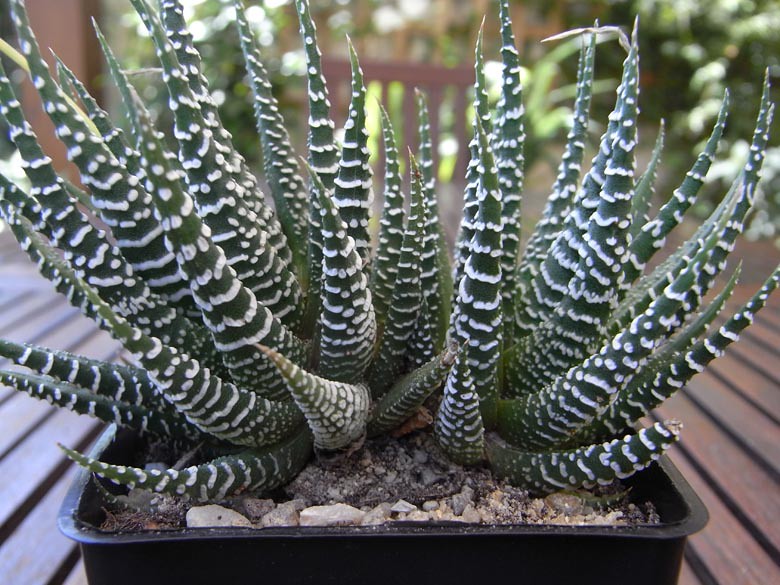
Why it’s great:
- It’s non-toxic!
- Stiff plump leaves, with striking white on green stripes
- It prefers bright full sun, but can do indoors just as well
- Fun to cross-breed with other Haworthias, if you’re into that sort of thing
- Only needs watering weekly or even fortnightly, depending on how hot your environment is!
Some of our favorite Haworthias include:
The “reptile” Haworthia (Haworthia Koelmaniorum)
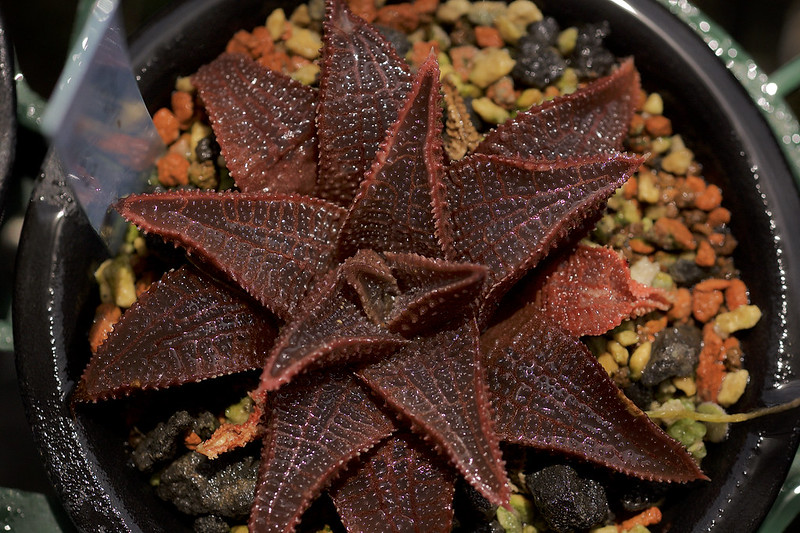
Known for its unusual brown, leathery and bumpy foliage.
The “crystal” Haworthia (Haworthia Obtusa)
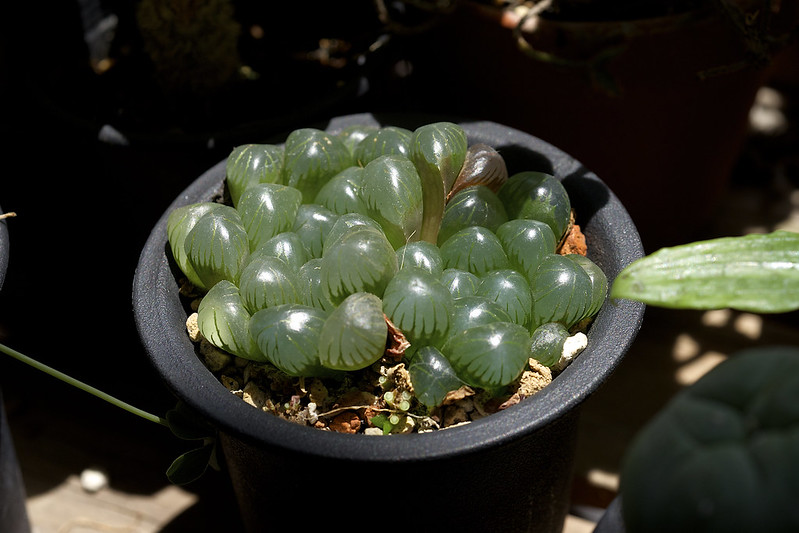
Known for its transparent “window” foliage, the leaves are almost totally see-through, making the stored water visible and truly gorgeous under the light. They all pretty much have the same care guide and are generally low-maintenance.
5. Hens and Chicks (Sempervivum – any)
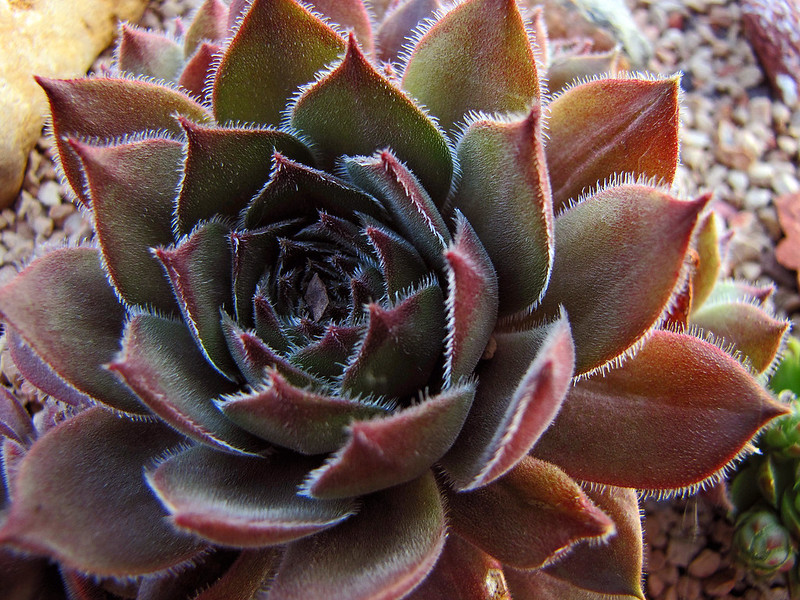
Why they’re so great:
- Pretty rosette succulents that look like flowers but are really clumps of leaves
- There are many variations, but they are generally non-toxic
- They thrive in both full light and low heat areas
- They’re fun (and easy) to propagate. These succulents get their name from the pups (chicks) that grow out of the mother-plant on stolen (smaller stem).
- Cold-hardy and drought resistant – these guys thrive on neglect. (Great for those of us who tend to abandon our plant babies.)
- In hot and dry areas, they only need to be watered once a week. In more humid areas, you can go as long as three to four weeks between watering.
Then there’s the unusual, exotic plants
If you are into the stranger side of things, you’ll love these plants! They are unlike the regular plants we see everyday and you’ll be surprised at how easy they are to look after.
6. Air plants (Tillandsia)
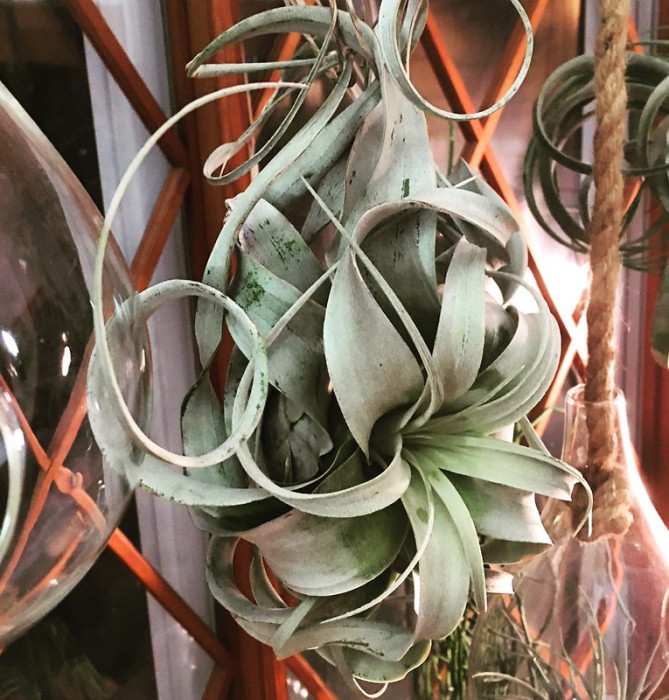
Why air plants are so great:
- Beautiful foliage that tends to be plump and powdery.
- They don’t require soil at all (WHAAT?) as they absorb moisture and nutrients from the air via their leaves
- Only need bright indirect light to survive.
- Just soak-and-dry once a week or mist them every two to three days
- They are so pretty! They make great additions to a home via hanging from the ceiling, table-top centerpiece, or even mounted on walls. (Fun fact: air plants bloom once in their lifetime and their flowers are rather exquisite.)
7. Venus Flytrap (Dionaea Muscipula)
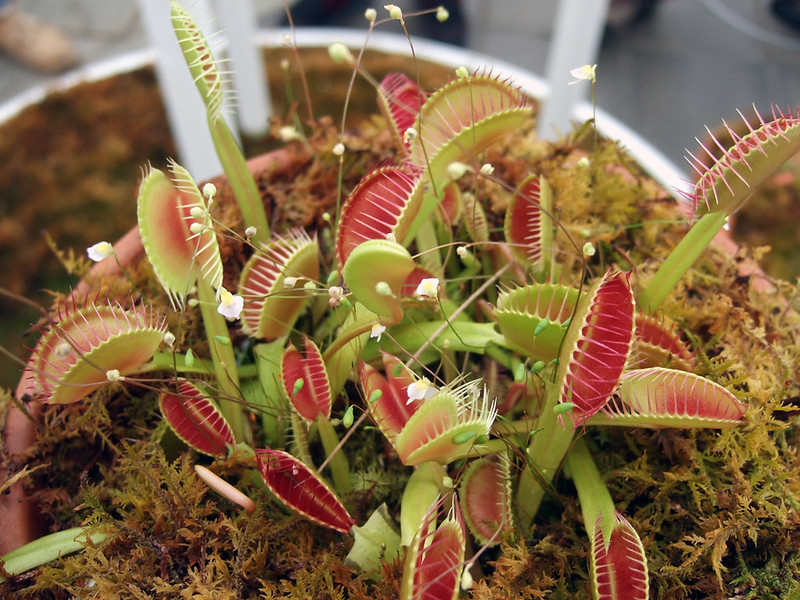
Why they’re great:
- Natural pest control – these carnivorous plants feed on flies and other small insects
- Their “teeth” aren’t actually sharp, so they cannot harm your pets or your fingers – don’t worry!
- Relies on bright light and moisture retention. Sphagnum moss, peat moss, and distilled water does the trick. (Be careful not to use fertiliser or any nutrient-rich soil as this is like poison to these fellas.)
- “Feed” them with a housefly or small insect once a week. One fish food pellet also does the job!
8. Marimo Ball (Aegagropila Linnaei)
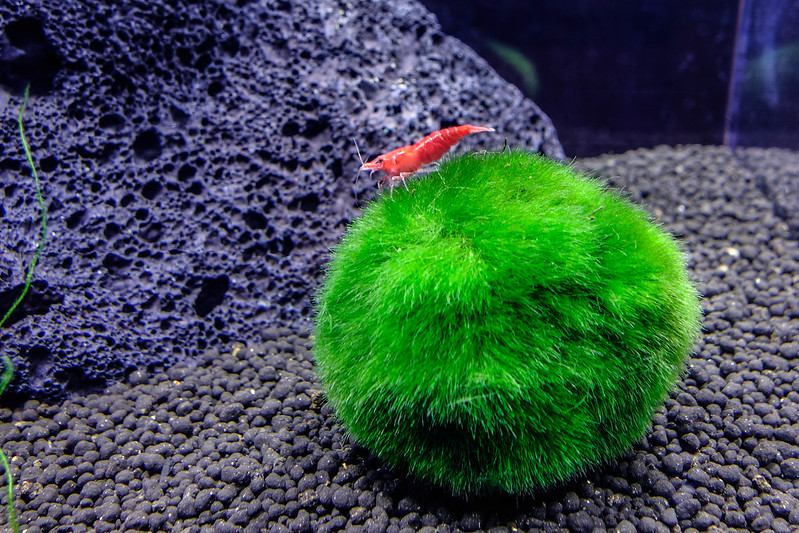
Why they’re so great:
- These ‘balls’ are a special type of moss ball originally found in Japan and Iceland. It is a rare, naturally-forming type of algae growth.
- They’re great for most aquariums as they generate oxygen and remove nitrates from the water.
- Don’t need much light! (They’re found naturally at the bottom of lakes.)
- They grow very slowly and live for a very long time (two centuries or more!). They are even passed down as family heirlooms to symbolise close, everlasting bonds.
- Can be kept in vases, jars, containers. Do not need air.
- If it is in an aquarium, change the water as you normally would. If kept in a jar, you may not ever have to change the water if it remains clear!
So, who says you can’t have it all? These plants are all unique in their own way and each one has its own fun little quirk.
While you probably don’t have to worry if your pup mistakes your Haworthia for a chew toy or if your cat “accidentally” swallows your baby Marimo ball, you’d probably want to keep your pets from chomping on your plants. It is after all a responsible pet-rent thing to do!












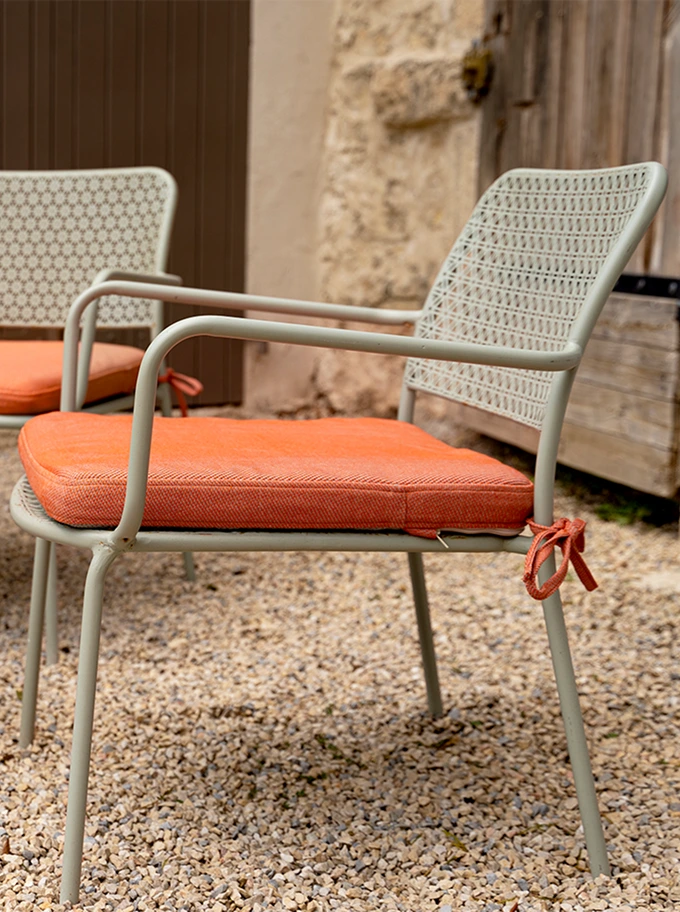
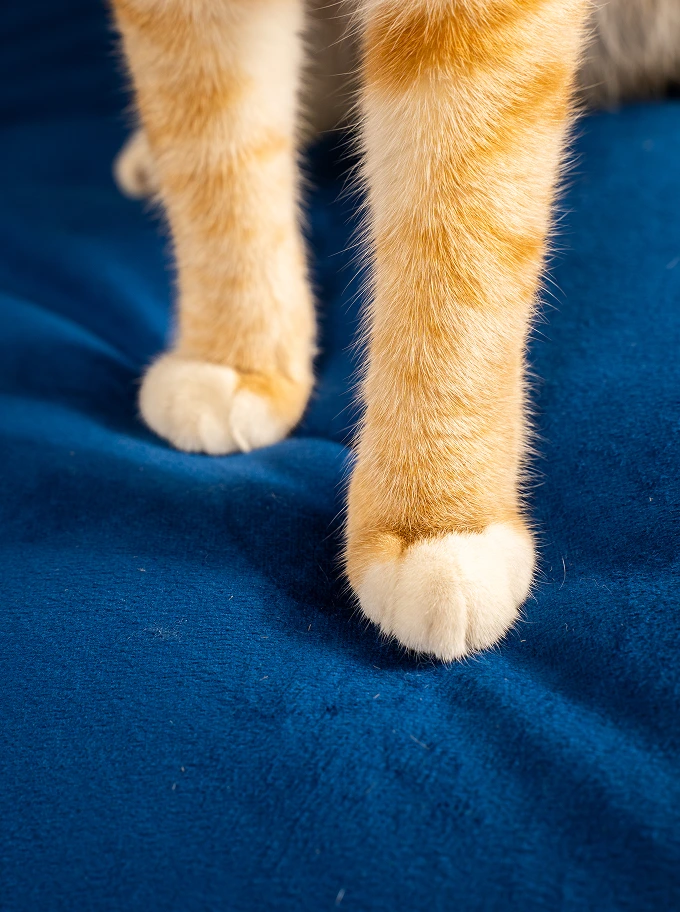
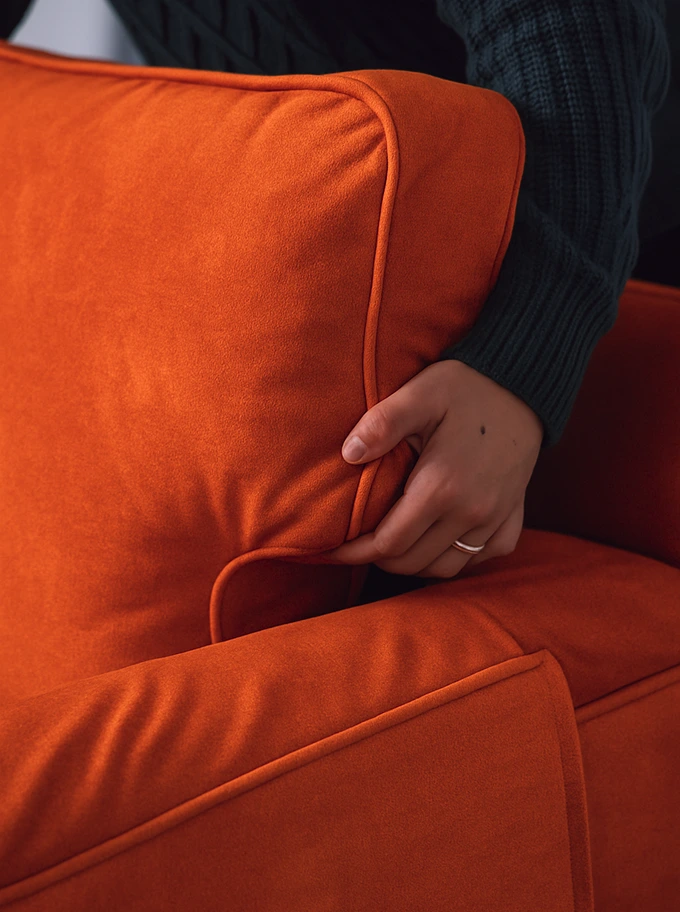
Lisa
Mar 7, 2022Spider plants are actually mild hallucinogens to cats. Unless you want your addicted cat to tear it up, hang it out of reach. Haha
Naomi
Mar 7, 2022Thanks for the insight, Lisa!
That’s a great tip – we’ll leave this here for all cat moms and dads :D